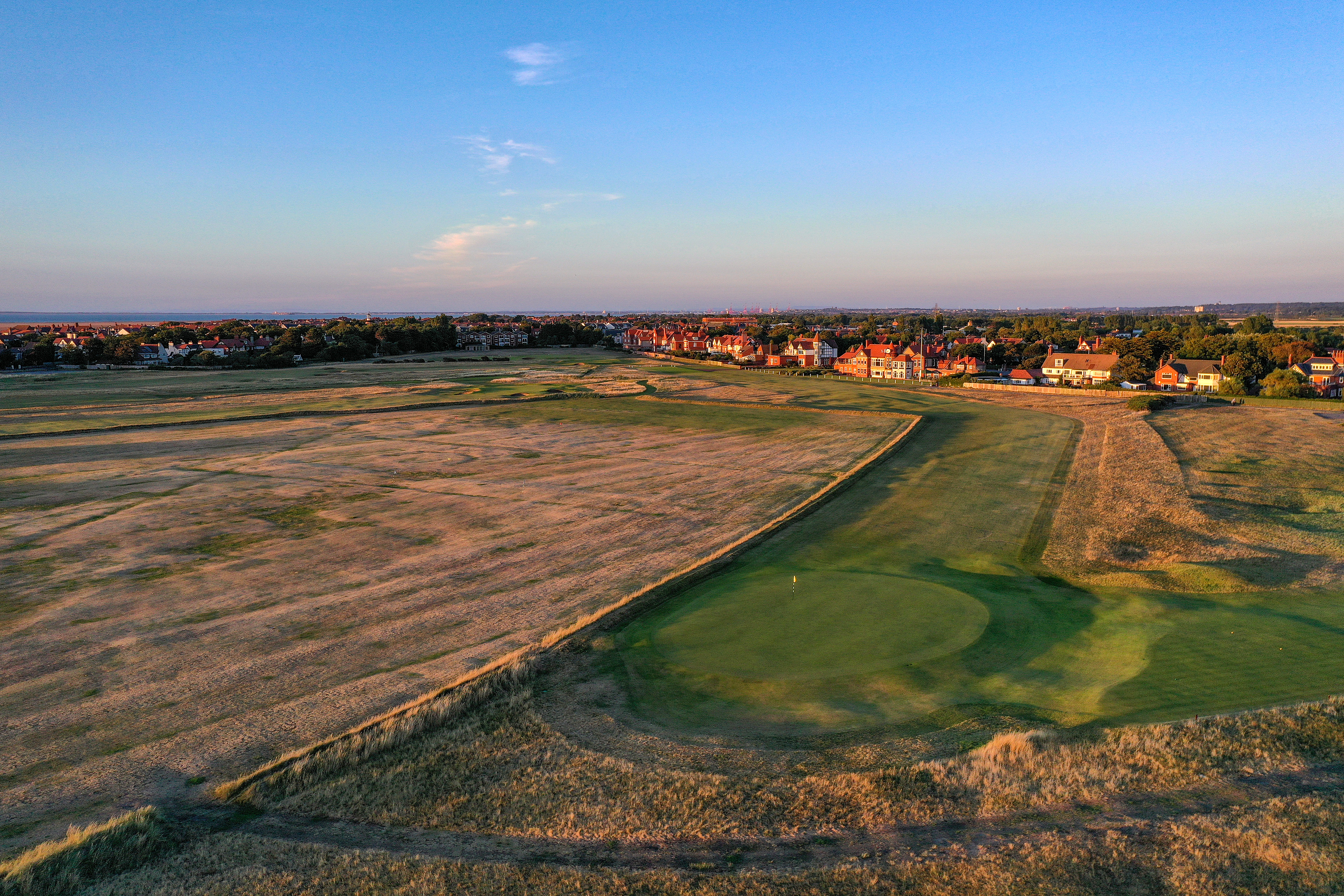
Most, if not all, golf courses will feature out of bounds (OOB) around the perimeters of the property, although sometimes you may not see or encounter it very much if the perimeter holes have a band of woodland, for example, between the rough and the boundary.
Those perimeter boundaries will usually be obvious, designated by things like walls, fences, hedgerows, roads, white stakes or white lines. Sometimes you have to be a little bit careful though, as at some seaside courses, the beach can actually be in bounds, as it is to the left of the 1st on Machrihanish’s Championship course and the right of the opening stretch along the Moray Firth on Nairn’s Championship course.
But some courses also have what is called internal out of bounds (IOOB) for various reasons, indicated via an appropriate Local Rule. For example, a certain hole or fairway may be out of bounds when you are playing an adjacent hole. This will typically be designated by white stakes, white lines or perhaps a shallow rut etched into the ground. Sometimes the IOOB will only apply to one or the other of the adjacent holes, usually for reasons of safety to discourage golfers from taking a line on a dogleg, for example, that might endanger other golfers.

The R&A (and some golfers) would probably prefer there to be no IOOB on our golf courses, but it does recognise that sometimes it is a wise option. This is from The R&A’s ‘course marking for general play’ advice:
“To maintain the character of a hole or to protect players on adjacent holes, the Committee may establish boundaries between two holes. If the internal boundary is not connected to other boundaries on the course, it is important to mark where the boundary starts and finishes.
“It is recommended that two stakes be placed side-by-side and at an angle that indicates that the boundary extends indefinitely in the direction desired. The internal boundary may apply for the play of only one hole or to more than one hole. The hole or holes for which the internal out of bounds applies, and the status of the stakes during the play of holes that the boundary does not apply, should be specified by a Local Rule.”
Indeed, there has been IOOB on the 3rd and 18th holes at Royal Liverpool Golf Club as they play the course in The Open (normally the club’s 1st and 16th holes), but that is perhaps slightly different as the IOOB surrounds what is normally the club’s practice ground and members do play it as OOB all year round.
More pertinently, the 2023 USPGA at Oak Hill sees the 7th fairway designated as an IOOB when playing the adjacent 6th hole to force players to tackle this tough par 4 as intended. Kerry Haigh, chief championships officer of the PGA of America, explains why: “That is the same rule we played at the KitchenAid Senior PGA Championship. With the redesign, the trees that were no longer there, sort of if you go down that way, take the water out."

It is this kind of thing that divides opinion on IOOB among golfers. Some would say, why should you be penalised for being on the golf course? Others would say, clearly it’s necessary for reasons of safety, or desirable to make people play the hole as the designer intended rather than cutting off a corner and perhaps taking a direct shot at the green on a dogleg. Both camps might say it indicates an overall design flaw of the layout that may need looking at or addressing if possible.
Whichever camp you fall in, all you really need to know is that if your ball strays the wrong side of an IOOB line, you only have one option under the Rules of Golf just as you do with a course boundary OOB – go back and play again under penalty of stroke and distance… or continue play with the provisional ball you will hopefully have hit when there was some doubt as to whether or not your original ball would be found in bounds.







